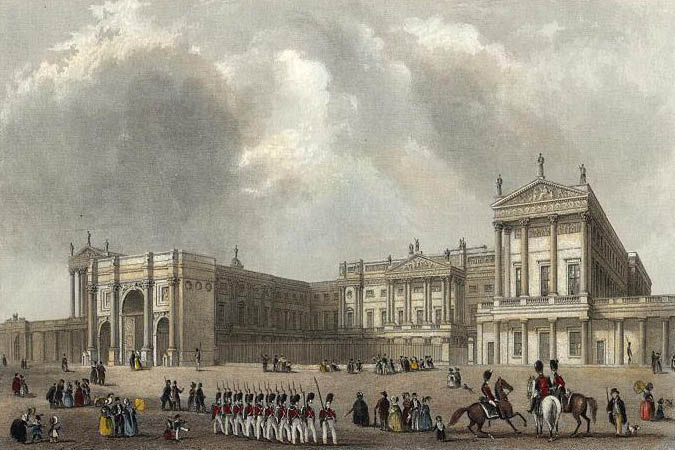Queen Victoria takes over Buckingham Palace once again
In 1837, just three weeks into her reign, Queen Victoria moved into the then unfinished Buckingham Palace, determined to quickly begin a new life on her own terms. Conversion of the Palace had been started by her uncle, King George IV, but no one had ever lived there as his successor, King William IV preferred Clarence House.
“Despite its unfinished state, the young Queen was delighted with her new palace. Shortly after she moved in, Victoria recalled [in her daily dairies] how much she liked Buckingham Palace’s ‘high, pleasant and cheerful’ interiors and the large garden, which her dog, Dash was particularly taken by,” says Lucy Peter, Assistant Curator of Paintings, Royal Collection Trust.
Following their wedding in 1840, the Queen’s private apartments on the north side of the palace were remodelled to accommodate the Prince Consort, Prince Albert of Saxe-Coburg and Gotha. Victoria and Albert each had private sitting and dressing rooms while the Queen’s suite also contained a room for her Dresser and an audience room for conducting state business.
But as early as 1845, Victoria felt the Palace was becoming too small to accommodate her rapidly growing family and plans were drawn up to alter and expand the Palace to the form as we know it today, with a new East Wing enclosing what had previously been a U-shaped courtyard and
sporting what would become the outward face of the modern British monarchy: the central balcony.
Queen Victoria was young, energetic and ambitious, and she was also an accomplished musician, singer and dancer, and her passions would help shape the Palace and its rooms.
An enormous new Ballroom was also added, along with a new kitchen that would help cater for the large number of guests the Royal couple would regularly entertain.
The Queen’s love of music and dancing also led to three ‘themed’ costume balls and the evening gown the Queen wore at the Stuart Ball of 1851 will be one of the highlights on display as part of a new exhibition at Buckingham Palace. Designed by the artist Eugene Lamit, the grey silk moiré costume was trimmed with gold lace while the underskirt was made of gold and silver brocade.
Running from July 20 to September 29, Queen Victoria’s Palace aims to highlight how the young monarch turned the royal residence into the heart of the British Monarchy, dramatically redesigning it to transform it as a rallying point for national celebrations and as well as a family home for a modern monarch.
Peter notes that Prince Albert played an important role in the remodelling of the palace, pointing out for example that a number of the drawings contained within an album of Pennethorne's plans and elevations of the Ballroom and Supper Room, have been annotated ‘Approved Albert’ in the top right-hand corner. “Similarly, during the final phases of building the East front, we know that Albert worked closely with the Queen’s Clerk of Works to integrate the fittings and furniture from the Royal Pavilion, Brighton, into Blore’s new spaces.” she says, adding, “Albert also took a particular interest in the organisation of the royal household.
As well as the dress worn by Victoria to the Stuart Ball, the exhibition includes the Supertunica, (a full-length embroidered coat made of gold silk cloth) worn by Queen Victoria at Westminster Abbey during her Coronation in 1838, plus a cradle made for Princess Louise, and a tabard, believed to have been worn by a Page at the Plantagenet Ball held by Victoria in 1842.
After Albert died in 1861, Victoria retreated from public life and avoided Buckingham Palace for over 10 years, describing the home they had built together in her diaries as ‘one of my saddest of sad houses.’
But with the support of her Prime Minister, Benjamin Disraeli, Victoria was coaxed back into public life, with the Palace playing a key role in Victoria’s Jubilee celebrations in 1887 and again in 1897, cementing its role as a symbol of the British monarchy.


